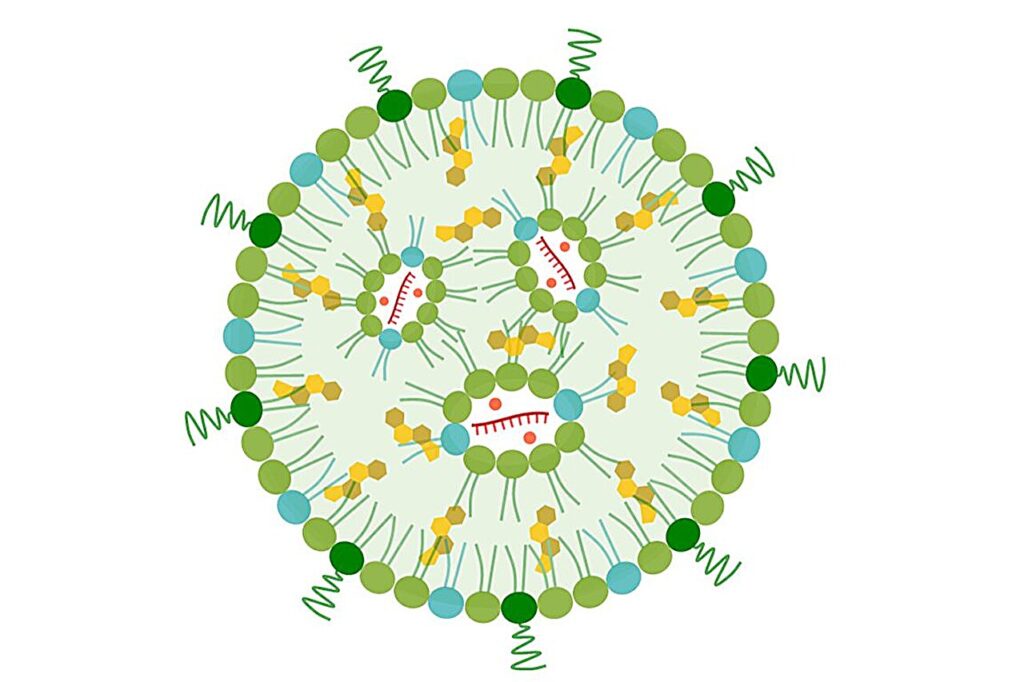Pancreatic cancer remains one of the most challenging tumors to treat, partly because it is often discovered at advanced stages when the disease has already spread, or metastasized. About half of pancreatic cancer patients experience metastasis to the liver, which worsens the prognosis for an already life-threatening disease.
However, a new technology from researchers at the California NanoSystems Institute at UCLA, or CNSI, is aiming to turn the tables on tumors that migrate from the pancreas to the liver.
The liver is vulnerable to cancer under normal conditions. The organ processes many foreign substances from the gut and must prevent the immune system from overreacting to harmless compounds in food. Unfortunately, this built-in suppression also weakens the fight against tumors, allowing them to grow unchecked.
The CNSI team has developed a patented technology aimed at reprogramming the liver’s immune defense to attack pancreatic cancer. They created a liver-targeting nanoparticle, billionths of a meter in size, that delivers two key components: an mRNA vaccine targeting an immune-activating marker, or antigen, commonly found in pancreatic cancer, and a small molecule that boosts the immune response.
In a study published in ACS Nano, experiments in lab models demonstrated that the nanoparticle both inhibited and prevented the growth of pancreatic cancer in the liver. Importantly, it also generated immune memory cells associated with long-term protection.
“The liver’s immunologically suppressive environment acts as a niche for the metastatic cancer cells to grow, but it could be reversed by the nanoparticles, breaking this tolerance and causing the body to instead attack the cancer,” said corresponding author André Nel, a UCLA distinguished professor of medicine at the David Geffen School of Medicine at UCLA and director of research at CNSI. “This technology could potentially change the course of metastatic pancreatic cancer as well as preventing spread to the liver in newly diagnosed patients without metastases.”
Possible future applications of the nanoparticle in addressing cancer
With further research, Nel envisions this nanoparticle as a platform for personalized cancer treatment, augmenting efforts underway elsewhere to use mRNA technology for raising anticancer immunity against tumor antigens. Oncologists could quickly test a patient’s pancreatic cancer for specific tumor antigen mutations to KRAS, a gene-targeted in this study that regulates growth and can drive cancer. Comprehensive genetic testing could also identify other immune-activating tumor antigens unique to the individual patient. These insights could guide the customization of the nanoparticle’s contents for each patient, tailoring treatment for the highest chance of success.
This approach could also be applied beyond pancreatic cancer, particularly for breast and lung cancer and other tumors that have well-characterized genetic mutations, including KRAS.
The nanoparticles are made of lipids, similar to the waxy coating around cells, which favors their uptake by antigen-presenting cells in the liver. This population of immune cells is directly responsible for the liver’s usual function of suppressing inflammatory responses to nurture immune tolerance, including ignoring metastatic cancer cells.
In previous work, Nel’s team had leveraged the liver’s natural tolerance mechanisms by using mRNA-carrying nanoparticles to reach liver antigen-presenting cells and successfully suppress severe allergic reactions, such as peanut allergies. In this new study, they showed that they could reprogram that effect to instead turn on the immune system.
The cancer-fighting mRNA in the nanoparticle functions similarly to COVID-19 mRNA vaccines. Instead of encoding the coronavirus’s spike protein, it contains instructions for a small fragment of the mutated KRAS tumor antigen that frequently appears in pancreatic cancer, and importantly, can turn on a cancer-specific immune response.
Additionally, researchers loaded the nanoparticle with a tiny genetic building block, called a dinucleotide, that triggers a biochemical signaling pathway known as STING in the antigen-presenting cells. That STING activity summons killer T cells in the immune system to attack the cancer. In the study, the researchers observed the appearance of killer T cells that recognize and kill KRAS-expressing pancreatic cancer cell metastases in an animal model.
“Combining a cancer vaccine with an immune-stimulating agent in a single nanoparticle offers a promising new strategy,” Nel said. “We envisage that this combination strategy will provide a major step forward in the fight against metastatic pancreatic cancer.”
The potential importance of timing in nanoparticle delivery
Experiments in mice with pancreatic cancer that spread to the liver showed that those treated with the nanoparticle had smaller, less-dispersed tumors and lived longer than control groups. When the nanoparticles were administered before the cancer developed, treated mice survived longer than untreated ones.
The researchers also demonstrated immune memory effects. When blood from treated mice was transferred to untreated mice before cancer developed, the recipients survived significantly longer than those without the transfusion. This suggests the therapy could offer long-lasting protection against pancreatic cancer recurrence, indicating it may be useful as a vaccine.
Toxicity can be an important issue with cancer treatments, and the potent STING pathway is known for its potential to spur harmful systemic inflammation. However, no toxicity was observed in the study, which the investigators ascribe to the STING-activating dinucleotide only working locally in the liver.
Further research is underway to apply this technology to other cancers that frequently spread to the liver. The team is also exploring a strategy to direct similar nanoparticles to the spleen—a key immune organ that assists immune defense at the original pancreatic cancer site.
That would make it possible to combine the new lipid nanoparticle approach with immune-stimulating chemotherapy delivered by a miniature glass bubble-like nanoparticle, called a silicasome, developed by the same group. The potential for a one-two punch against pancreatic cancer could pave the way for new treatments that not only fight the disease but also provide long-term immunity against its return.
The first author of the study is Xiao Xu, a former UCLA postdoctoral researcher. Other co-authors are UCLA senior research associates Xiang Wang and Yu-Pei Liao; and Lijia Luo, a UCLA postdoctoral researcher.


